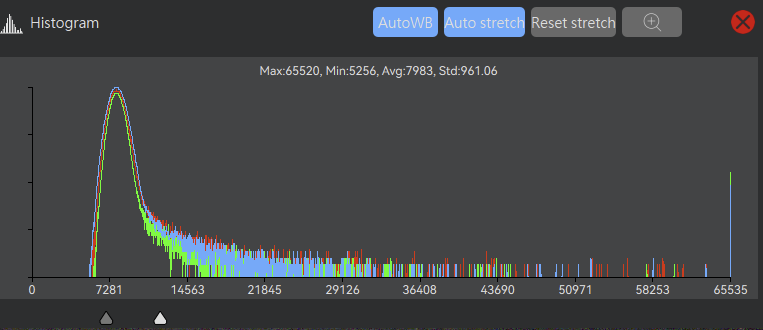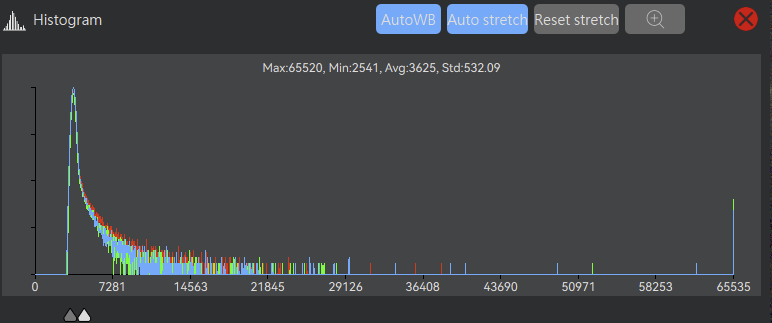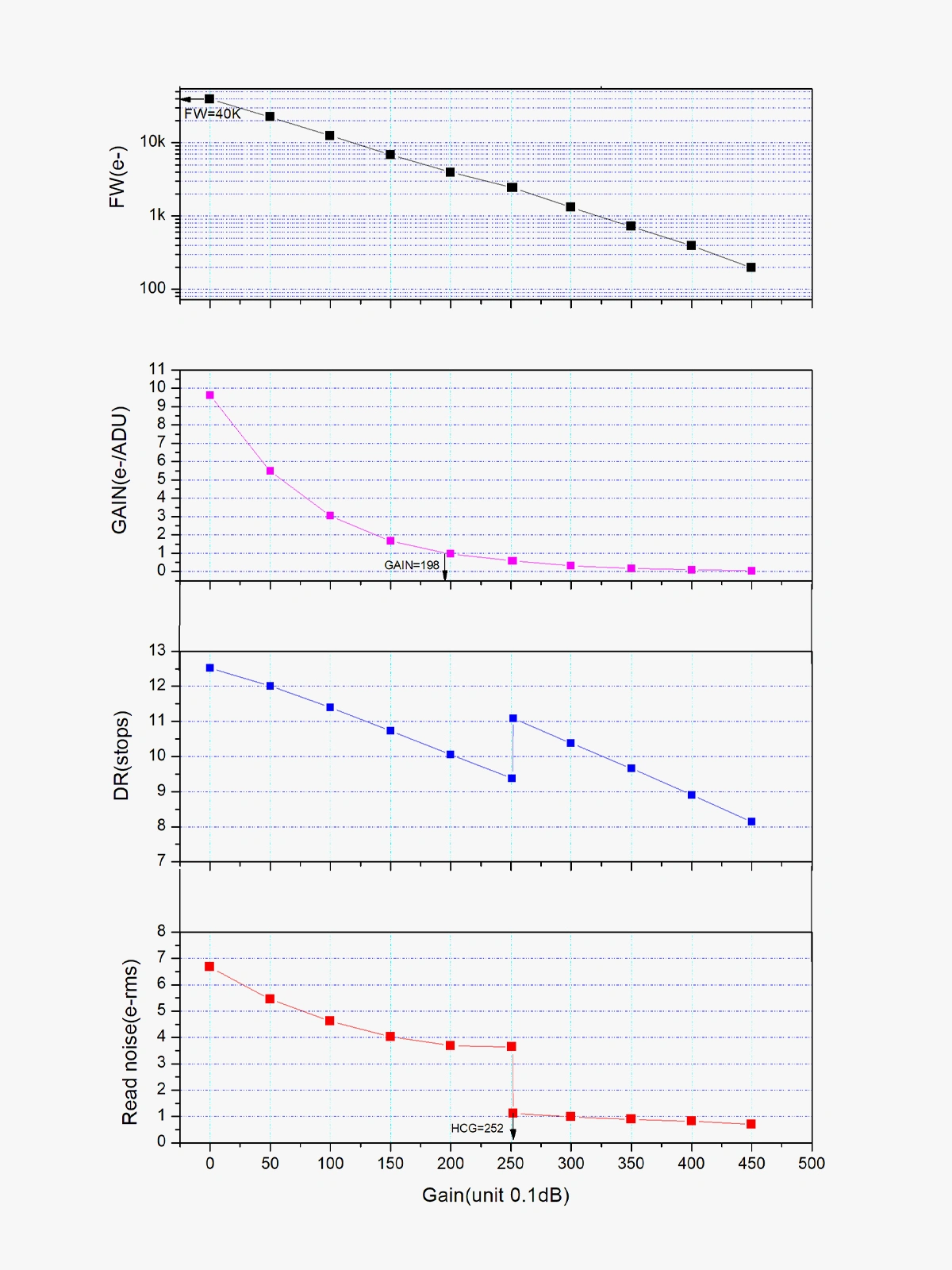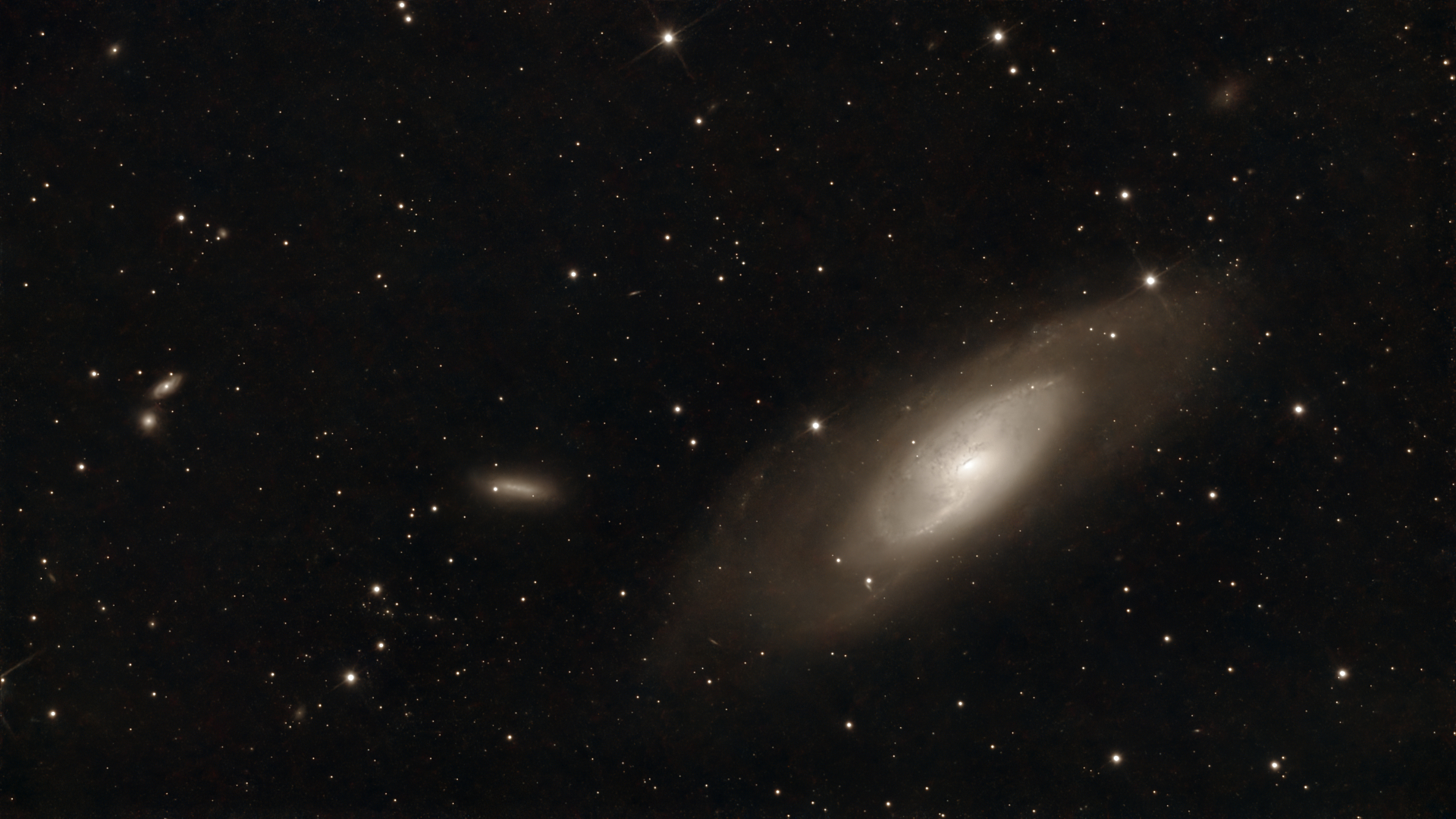Rick Veregin:
<long story about noise and gain  >
>
Hi Rick,
great story which I sadly don't understand completely yet. Here are two images.
The first image is M33 with IR Cut filter at 252 gain with 60 seconds exposure.

The second image is M81/82 with IR Cut filter at 100 gain with 300 seconds exposure

Now based on your story in using the most of the range of your sensor, which one is better?
Based on the histogram for Image 1 could I have used also 2 minute exposures?
You determine the skyglow with a 4 seconds exposure. Is there a reason for this? What is this number based on?
You speak of levels for using your image (from 5K to 40K), but how can you do this if the FW of the camera at 252 gain is only 4K and it's a 12Bit camera?
Hi Tony
Looking at your 252 gain image at 60s, you are using the histogram really well, and only saturating a few pixels. I use SharpCap and it shows a histogram with the number of saturated pixels, so one can make a judgement call. My judgement is there will only be a few pixels of bright stars saturated, so this is fine. At this gain you are at 0.5 e/adu, which is great, you are above unity gain. And given you are in Bortle 8 (like me) with just an IR filter, this exposure is more than enough to make read noise be insignificant vs. sky noise. I would not go to longer at this gain for this target. Doubling to 2 minutes means that anything > about 38000 adu will be >2x38000 is > 66,000, so saturated. Similarly if you half your exposure, you will have virtually no signal >38000, except perhaps some of those pixels that were in saturated cores. So you will not be using all of your dynamic range.
Looking at your 100 gain image at 300 s, you have very little in the upper half of the histogram, >3800 is pretty much empty of data, and you still have some saturated cores. So the histogram here is not looking quite as good. Your read noise here is around 4.5 e, but again based on my experience in Bortle 8, you are not getting much contribution of read noise at 300 s. That is great. Note here you are at 3 electrons/adu, so you are loosing some electron resolution, you can’t tell 0 from 2 electrons, or 3 from 5 electrons, etc, in your output. Now unfortunately, while increasing the gain from 100 to 150 will increase your signal 2X or 1 stop you will also lose dynamic range, so likely saturate too much. And doubling the gain will not get you to unity gain. You could increase exposure, but that will not obviously get you to unity gain either, and 600 s is getting a bit longer than you might want? I would increase gain to get to unity gain, this gives you two stops or 4 X bigger signal. So you could drop your exposure to 150s, bringing it down 2X in signal. So now your histogram will be better filled. The advantage of going from 100 to 198 gain is that there is virtually no loss in camera dynamic range.
I know this is all quite complicated, there is a lot to think about.
General rules of thumb:
Unity gain is a good place to be, but if you are not filling the histogram you could increase gain, but carefully as you now will lose dynamic range with higher gain. But if you are far away from filling the histogram, higher gain can be good. Of you could increase subexposure, but in Bortle 8, without NB filters, 60 sec is going to be a long enough sub to subdue the read noise, going longer is not helpful, particularly if you have to drop below unity gain.
Regarding your other questions
You determine the skyglow with a 4 seconds exposure. Is there a reason for this? What is this number based on?
Actually I took a longer exposure, measured the background signal, then with the calculations as I showed, calculated that 4 s was sufficient that read noise with my settings would be insignificant compared to sky noise. This means anything more than a 4 sec sub is not helping the image quality, though obviously at 4 s that would be a lot of subs!!
You could easily do you own background calculation. I point my telescope overhead as that is the darkest part of the sky and I do it in the middle of the night when it is darkest. So this is the lowest background I can get. I take any arbitrary length exposure at the gain I want to use. I use DeepSkyStacker to stack, it shows the background % signal for each image when you register the image. You need to run a bias or dark frame as well, so that is subtracted in your stacking software (note I'm not actually stacking, just registering one sub). So say DSS says 1% background. My full well for that gain is say 10,000 electrons. Then my background is 10000 x 1% = 100 electrons and my background noise is sqrt(100) = 10 e. Your total noise is sqrt (10^2 + Readnoise^2). I calculate the noise result and compare to the value without read noise. Your background signal is proportional to exposure, so if I find I need to double my background signal to get to a good spot, I know I just need to increase my subexposure. So in this way you can calculate what exposure you need so Read noise doesn’t contribute significantly. This is what I did.
You speak of levels for using your image (from 5K to 40K), but how can you do this if the FW of the camera at 252 gain is only 4K and it's a 12Bit camera?
I was referring to a case where you would have the 40 K FW. And unfortunately, I fell into a trap that is easy to fall into, since I was thinking of my 16-bit camera, where the FW in electrons and levels is the same. My apologies—let me correct this below.
At zero gain, your camera has 40 K electrons full-well, not 40 K levels. As a 12-bit camera it only has 4096 levels. So 40,000 e/4096 levels = 9.77 e/adu, which is what your chart shows. So I could have said you want to fill the full-well up to 40 K electrons, or you want to fill as 4096 adu units. But this is where it gets complicated, because for a 16-bit file output, we have a problem because we only have 12-bits of output. The actual histogram should go from 0 to 4095, not to 64K. It depends both on the camera and what software you use how this problem is dealt with for cameras with less than 16 bits of data. Sometimes you will get the real histogram, other times the data is adjusted in some way, as your histogram clearly is. So one cannot use the histogram in this case to do any calculations, unless you know what the camera and your software is doing to the data to fill the 64k histogram. All you histogram can show you is if you are using the full range of possible levels, and if you are saturating.
Unfortunately, the more you dig into this, the more complex it gets. But I hope that the general rules and approach will enable you to optimize your imaging. And by the way, none of the histograms show a real problem, they are fine--though in my opinion going to less than unity gain is not the best. If you really need that wide a dynamic range just decrease your exposure a bit.
Rick




